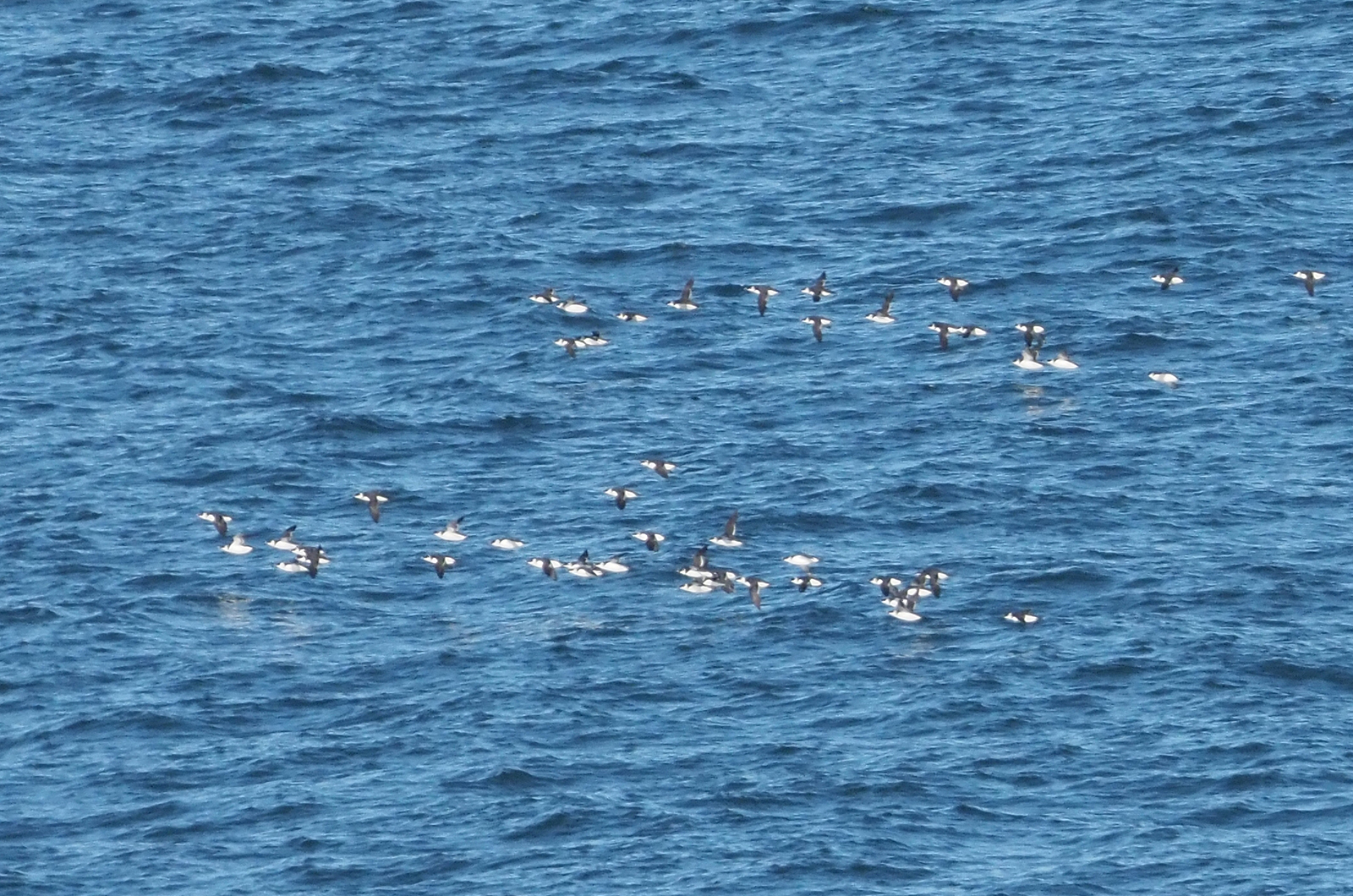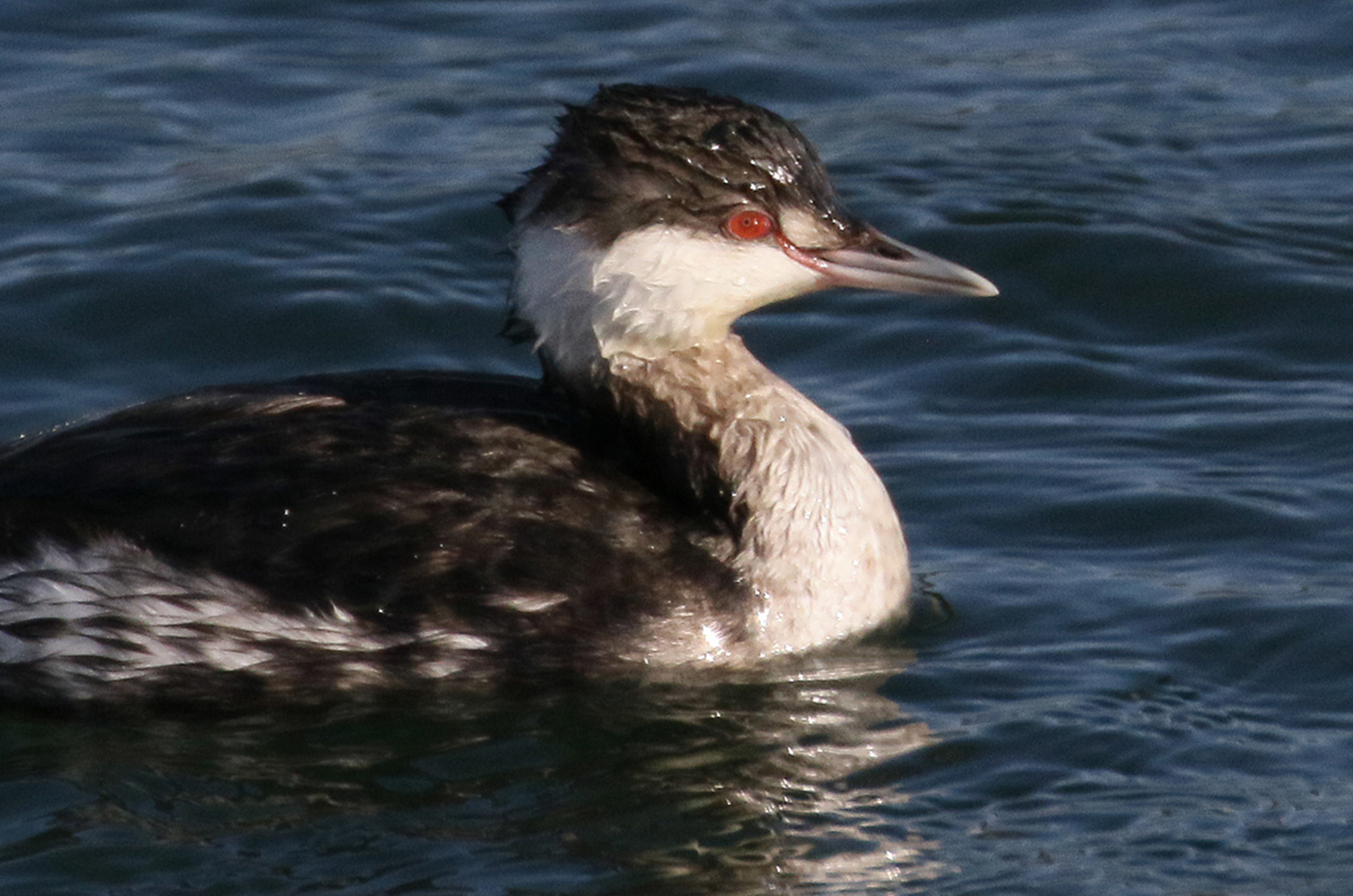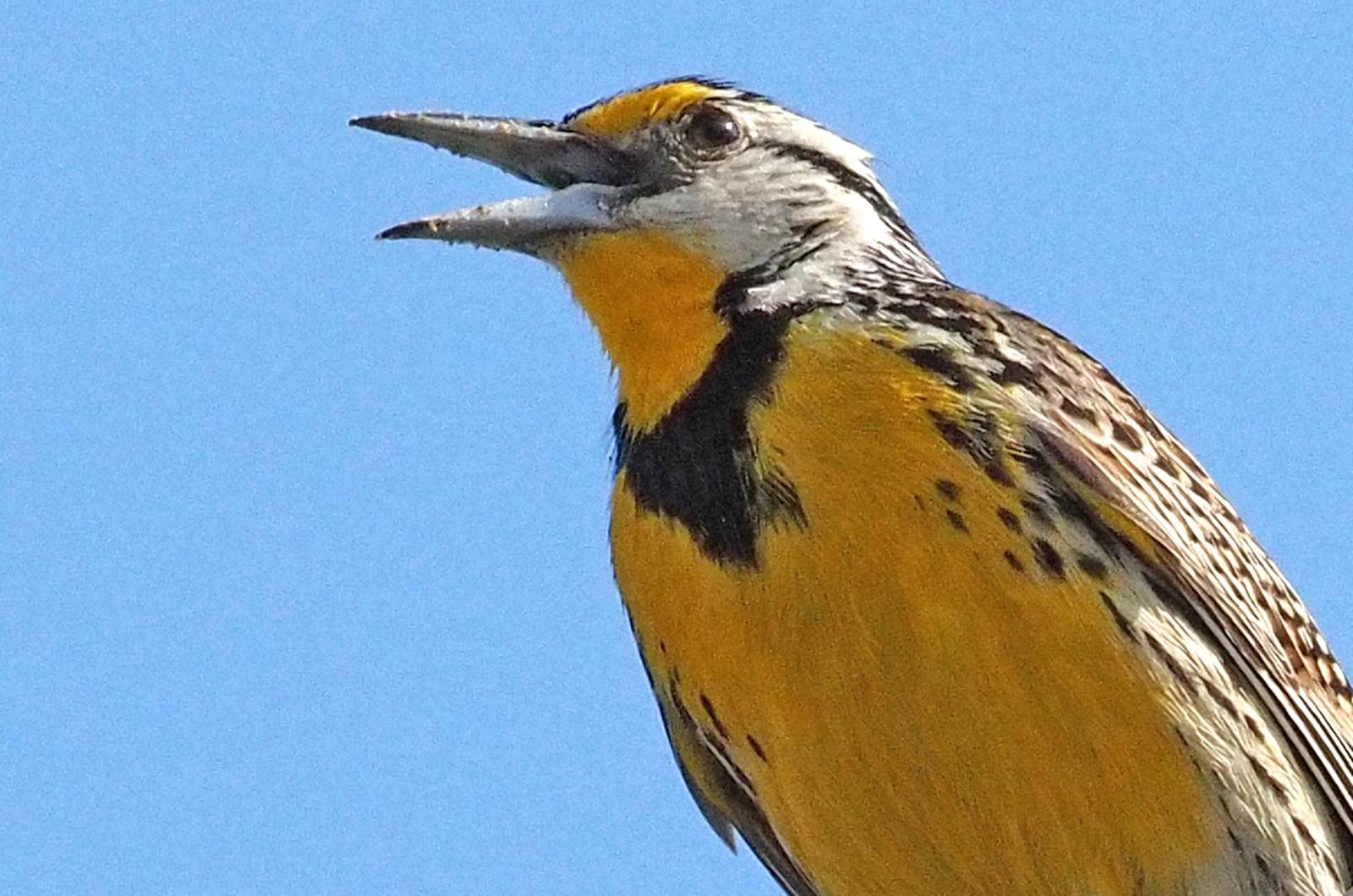On the Island we do not get to see a lot of pelagic species, primarily because they generally do not come this close to land. Provincetown and Stellwagen Bank are a different story, as they are in the colder Gulf of Maine rather than the warmer mid-Atlantic. Something changed last summer and shearwaters, especially great shearwaters, were seen regularly from Moshup Trail Beach and the Gay Head Cliffs. I called it the shearwater show.
The shearwaters are long gone, having retreated back to their South Atlantic breeding grounds. But now other pelagic species have taken their place.
Bob Shriber visited the Gay Head Cliffs on Jan. 8 and observed the spectacle of an estimated 2,500 razorbills; he saw a constant stream of flocks of 50-75 birds at a time for the hour he was watching. All the birds were heading southward and out to sea. Razorbills are a northern alcid — a black and white penguin-like bird — that breeds in Newfoundland, is a year-round resident from there south to the central Gulf of Maine, and winters on the open ocean as far south as North Carolina.
Why the bonanza of razorbills? I suspect it is the same reason for all the shearwaters last summer. I recall studies from Stellwagen Bank that determined seabirds concentrated in areas where sand lance — a small marine fish at the base of the oceanic food web — are abundant. And according to Gazette reporting, sand lance were abundant off Aquinnah last summer.
Razorbills have also been reported elsewhere on the Island during this first week of January. David Morris spotted one perched on a seaweed-strewn rock on the north shore a bit west of Makonikey on Jan. 9. In addition to Bob Shriber’s huge flock on Jan. 8, Shea Fee found two off Wasque while Margaret Curtin, Luanne Johnson and Nancy Weaver observed a pair off the East Chop cliffs that day. Dave Small spotted four razorbills from a Steamship Authority ferry in Vineyard Sound on Jan. 2. And on the Jan. 1 Christmas Bird Count, six field teams — a notable number — found them: 18 from Cape Pogue, one from Edgartown, two from Oak Bluffs, two from Lambert’s Cove, two from Squibnocket, and a remarkable 294 from the Gay Head Cliffs and Lighthouse Road.
Two common murres — another pelagic species — were spotted by the Gay Head team during the Bird Count on Jan. 1. This was a new species for the count, the 225th species recorded on the count since 1960. Fortunately, they photographed the birds so they could confirm the identification the next day. A third species of alcid found on the count is the dovekie; there were 28 of these small alcids off Aquinnah. Tony Lima found another lucky individual that was stranded at Norton Point Beach (their feet are so far to the rear of their body that they really can not walk on land), and he quickly put it back into the ocean.
The Island has been hopping with other pelagic species. At the Gay Head Cliffs on Jan. 8, Bob Shriber also (remember the 2,500 razorbills) found two black-legged kittiwakes, 25 Bonaparte’s, gulls, three lesser black-backed gulls and 32 northern gannets. Shea Fee visited Long Point on Jan. 7 and saw 12 gannets. A Bonaparte’s gull resting on a piling in Menemsha was photographed by Jeff Bernier and Tim Johnson on Jan. 6. Charles Morano saw five gannets at Stonewall Beach on Jan. 4 while Dave Small spotted a thick-billed murre and five gannets from a Steamship Authority ferry in Vineyard Sound on Jan. 2. Also that day, Parker Fyfe-Kiernan found two horned grebes and two Bonaparte’s gulls at Squibnocket Beach.
To quote the late Vern Laux and others, “Birds have wings and they use them!” Which can explain Tony Lima’s Jan. 8 sighting of a yellow-breasted chat as it perched in a viburnum near the cattail swamp along south Circuit avenue in Oak Bluffs. An unlikely location since almost all chat sightings seem to come from Aquinnah or Chilmark.
There have been two sightings of a great egret this month. I believe that the Bird Count’s Edgartown team found one somewhere in Katama and Jeff Bernier found two at Sheriff’s Meadow Sanctuary on Jan. 4. How long will these birds stay into the winter?
Sandpipers and plovers are scarce now. On Jan. 8 Matt Pelikan found one black-bellied plover and two sanderlings at State Beach and Margaret Curtin, Luanne Johnson and Nancy Weaver saw 15 sanderlings and 31 dunlins at Harthaven.
Shea Fee spotted an eastern meadowlark on Jan. 7 at Long Point, along with a common raven, three eastern bluebirds, five cedar waxwings and 34 yellow-rumped warblers. Brown creepers were seen by Nancy Weaver at Waskosim’s Rock Reservation on Jan. 7. Thomas Humphrey “brought out the binoculars when I saw a little brown thing hopping up one of my big oaks — it was a brown creeper” at his home in the northern part of Ocean Heights.
Jon Cassel notes that a flock of robins is roosting in his bamboo patch near Tisbury Meadow; this is the same flock that Matt Pelikan saw on the Bird Count. Penny Weinstein had a solitary male red-winged blackbird at her feeder on Jan. 8.
Finally, hawks and eagles. Two bald eagles were found by Sharon Simonin and her friend’s son Ellis at the North Road end of the Woods Preserve on Jan 3. And on Jan. 2 Tony Lima saw one bald eagle at Oyster Pond. Luanne Johnson spotted a merlin at Long Pont on Jan. 5 and sharp-shinned hawks were seen by Parker Fyfe-Kiernan, Margaret Curtin, Nancy Weaver and Luanne Johnson on Jan. 2 along South Road. Another was seen on Jan. 2 by Shea Fee in her Wasque yard.
Please email your sightings to birds@mvgazette.com.
Robert Culbert is an ecological consultant with Nature Watch LLC living in Vineyard Haven.









Comments
Comment policy »